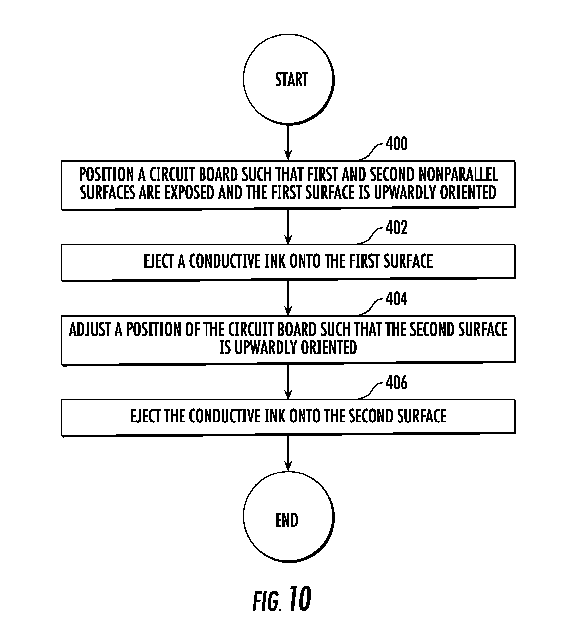Well, what do we have here? The day after Christmas, Apple took all of the money it got from grandma and used it to file 28 patents at the US Patent & Trademark Office. And, buried in its patent dump was an application for an “Inkjet printer for printing on a three-dimensional object”.
In the past, at 3DPI, we’ve covered the pursuit of printing onto curved surfaces. Often there will be an independent robot arm that writes along the contours of an object. What sets this patent apart is that the object itself is being manipulated, rotated and tilted, so that the printhead can inscribe a conductive ink onto its surfaces. See a fragment from the patent filing below:
An inkjet printer configured to print on a three-dimensional object is provided. The inkjet printer may include a print head that ejects a conductive ink. The inkjet printer may also include an assembly configured for adjusting a position of an object relative to the print head. The adjustment assembly may include a fixture configured to hold an object, such as a circuit board, that is to be printed on. The fixture may be configured to hold the object such that multiple surfaces thereof, which may be nonplanar, are exposed. A tilt adjustment mechanism may be coupled to the fixture and configured to adjust a tilt angle of the object. Further, a rotational adjustment mechanism may be coupled to the fixture and configured to adjust an angular position of the circuit board. Accordingly, the surfaces of the object may each be upwardly oriented such that the print head may print thereon.
The patent application doesn’t seem to indicate that the company is venturing too far into 3D printing territory. Instead, it may reflect Apple’s intent on producing curved smart devices, for which the ability to print conductive ink onto a three-dimensional object may be necessary.
Still, the progress of this process hints at the small steps being made towards all-inclusive 3D printing in which objects, during the printing process, could be infused with conductive material. If the printhead outlined in the patent is modified slightly to use an FFF extruder, there’s the possibility for a richer and more flexible 3D printing process to take place.
Source: Patently Apple




